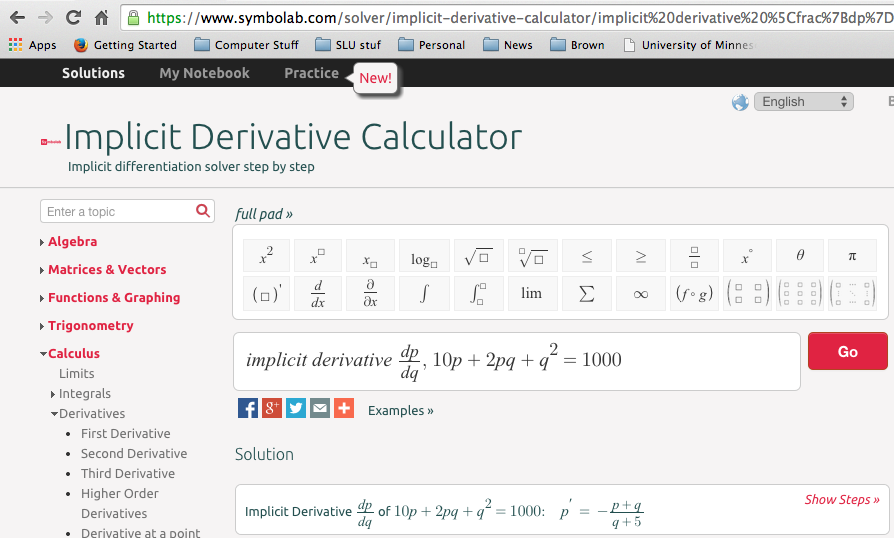Example 5.1.1. Tangent to a circle.
Solution 1. Solution A
To find the equation of a line we need a point and a slope. We already have the point at \((4,3)\text{.}\) To find the slope, we can express the circle as the graph of 2 functions. We first solve for \(y^2\text{:}\)
\begin{equation*}
y^2=25-x^2\text{.}
\end{equation*}
We then take the square root to produce 2 functions.
\begin{align*}
f_1 (x)\amp =\sqrt{25-x^2 }\\
f_2 (x)\amp =-\sqrt{25-x^2 }\text{.}
\end{align*}
The point is on the first function, which is the top half of the circle, so we take its derivative and evaluate at \(x=4\text{.}\)
\begin{align*}
f_1' (x)\amp =1/2 (25-x^2 )^{-1/2} (-2x)\\
f_1' (4)\amp =1/2 (25-4^2 )^{-1/2} (-8)=-4/3\text{.}
\end{align*}
Thus the tangent line, in point-slope form, is:
\begin{equation*}
y=3-\frac{4}{3} (x-4)\text{.}
\end{equation*}
Solution 2. Solution B
To find the equation of a line we need a point and a slope. We already have the point at \((4,3)\text{.}\) To find the slope, we take the derivative of our equation. Since we do not have y as a function of \(x\text{,}\) we simply note that its derivative is the placeholder \(y'\text{.}\) Recall that \(\frac{d}{dx} x\text{,}\) the derivative of \(x\) with respect to \(x\text{,}\) is simply 1.
\begin{align*}
\frac{d}{dx}(x^2+y^2\amp =25)\\
\frac{d}{dx}(x^2)+\frac{d}{dx}(y^2)\amp =\frac{d}{dx}(25)\\
2x \frac{d}{dx}(x)+2y \frac{d}{dx}(y)\amp =0\\
2x+2y y'\amp =0\text{.}
\end{align*}
We then solve for \(y'\) and substitute our point \((4,3)\) in for \((x,y)\text{.}\)
\begin{equation*}
y'=-\frac{2x}{2y}=-\frac{x}{y}\text{.}
\end{equation*}
When we substitute our point \((4,3)\) in for \((x,y)\) we get the same value, \(y'=-\frac{4}{3}\text{.}\) Thus the tangent line, in point-slope form, is:
\begin{equation*}
y=3-\frac{4}{3} (x-4)\text{.}
\end{equation*}



